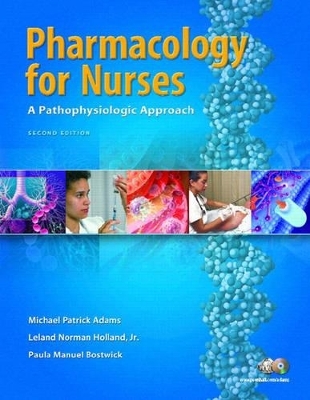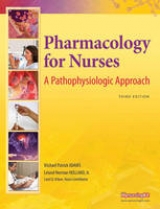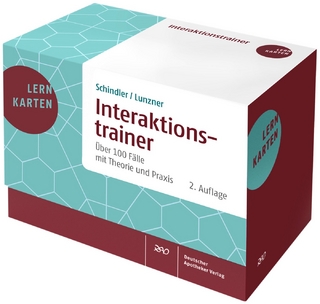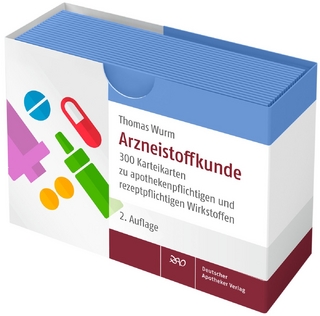
Pharmacology for Nurses
Pearson
978-0-13-175665-6 (ISBN)
- Titel erscheint in neuer Auflage
- Artikel merken
About the Authors Michael Patrick Adams, PhD, RT(R), is the Dean of Health Occupations at Pasco-Hernando Community College. He is an accomplished and national speaker. The National Institute for Staff and Organizational Development in Austin, Texas, named Dr. Adams a Master Teacher. He has been registered by the American Registry of Radiologic Technologists for over 30 years. Dr. Adams obtained his Masters degree in Pharmacology from Michigan State University and his Doctorate in Education at the University of South Florida. Leland Norman Holland, Jr., Ph.D. (Norm) is the Associate Academic Dean and Dean of the College of Arts and Sciences at Southeastern University in Lakeland, Florida. He is actively involved in teaching and helping student prepare for service in medicine, nursing, dentistry, and allied health.. He has taught pharmacology over the course of 15 years at both the undergraduate and graduate level. He is very much dedicated to the success of students preparing for work-life readiness. He comes to the teaching profession after spending several years doing basic science research at the VA Hospital in Augusta, Georgia and the Medical College of Georgia where he received his Ph.D. in Pharmacology. Consulting Editor: Paula R. Bostwick, RN, MSN is the Nursing Department Chair at Ivy Tech Community College in Fort Wayne, Indiana. She has been involved in nursing education for more than 15 years. She has clinical experience in medical-surgical and critical care nursing. She received her Masters of Science in Nursing from Ball State University.
Table of Contents
Pharmacology for Nurses: A Pathophysiologic Approach, 2nd edition
Unit 1: Fundamental Concepts of Pharmacology
Chapter 1 Introduction to Pharmacology: Drug Regulation and Approval
Chapter 2 Drug Classes and Schedules
Chapter 3 Emergency Preparedness
Chapter 4 Principles of Drug Administration
Chapter 5 Pharmacokinetics
Chapter 6 Pharmacodynamics
Unit 2: Pharmacology and the Nurse-Patient Relationship
Chapter 7 The Nursing Process in Pharmacology
Chapter 8 Drug Administration throughout the Lifespan
Chapter 9 Medication Errors *****NEW CHAPTER*****
Chapter 10 Psychosocial, Gender, and Cultural Influences on Pharmacotherapy
Chapter 11 Herbal and Alternative Therapies
Chapter 12 Substance Abuse
Unit 3: The Nervous System
Chapter 13 Drugs Affecting the Autonomic Nervous System
Chapter 14 Drugs for Anxiety and Insomnia
Chapter 15 Drugs for Seizures
Chapter 16 Drugs for Emotional and Mood Disorders
Chapter 17 Drugs for Psychoses
Chapter 18 Drugs for the Control of Pain
Chapter 19 Drugs for Local and General Anesthesia
Chapter 20 Drugs for Degenerative Diseases of the Nervous System
Chapter 21 Drugs for Neuromuscular Disorders
Unit 4: The Cardiovascular and Urinary Systems
Chapter 22 Drugs for Lipid Disorders
Chapter 23 Drugs for Hypertension
Chapter 24 Drugs for Heart Failure
Chapter 25 Drugs for Angina Pectoris and Myocardial Infarction
Chapter 26 Drugs for Dysrhythmias
Chapter 27 Drugs for Coagulation Disorders
Chapter 28 Drugs for Hematopoietic Disorders
Chapter 29 Drugs for Shock
Chapter 30 Diuretic Therapy and Drugs for Renal Failure
Chapter 31 Drugs for Fluid Balance, Electrolyte, and Acid-Base Disorders
Unit 5: The Immune System
Chapter 32 Drugs for Immune System Modulation
Chapter 33 Drugs for Inflammation, Fever, and Allergies
Chapter 34 Drugs for Bacterial Infections
Chapter 35 Drugs for Fungal, Protozoan, and Helminth Infections
Chapter 36 Drugs for Viral Infections
Chapter 37 Drugs for Neoplasia
Unit 6: The Respiratory System
Chapter 38 Drugs for Upper Respiratory Disorders
Chapter 39 Drugs for Lower Respiratory Disorders
Unit 7: The Gastrointestinal System
Chapter 40 Drugs for Peptic Ulcer Disease
Chapter 41 Drugs for Bowel Disorders, Nausea, and Vomiting
Chapter 42 Drugs for Nutritional Disorders
Unit 8: The Endocrine System
Chapter 43 Drugs for Pituitary, Thyroid, and Adrenal Disorders
Chapter 44 Drugs for Diabetes Mellitus
Chapter 45 Drugs for Disorders and Conditions of the Female Reproductive System
Chapter 46 Drugs for Disorders and Conditions of the Male Reproductive System
Unit 9: The Integumentary System and Eyes/Ears
Chapter 47 Drugs for Bone and Joint Disorders
Chapter 48 Drugs for Skin Disorders
Chapter 49 Drugs for Eye and Ear Disorders
Glossary
Appendix A: Canadian Drugs and Their U.S. Equivalents
Appendix B: Top 200 Drugs Ranked by Number of Prescriptions
Appendix C: Bibliography and References
Appendix D: Answers to NCLEX, Critical-thinking Questions, and Med Errors Alert
Appendix E: Methods for Calculating Drug Doses
Index
| Erscheint lt. Verlag | 26.4.2007 |
|---|---|
| Sprache | englisch |
| Maße | 212 x 276 mm |
| Gewicht | 1896 g |
| Themenwelt | Medizin / Pharmazie ► Medizinische Fachgebiete ► Pharmakologie / Pharmakotherapie |
| ISBN-10 | 0-13-175665-6 / 0131756656 |
| ISBN-13 | 978-0-13-175665-6 / 9780131756656 |
| Zustand | Neuware |
| Haben Sie eine Frage zum Produkt? |
aus dem Bereich



